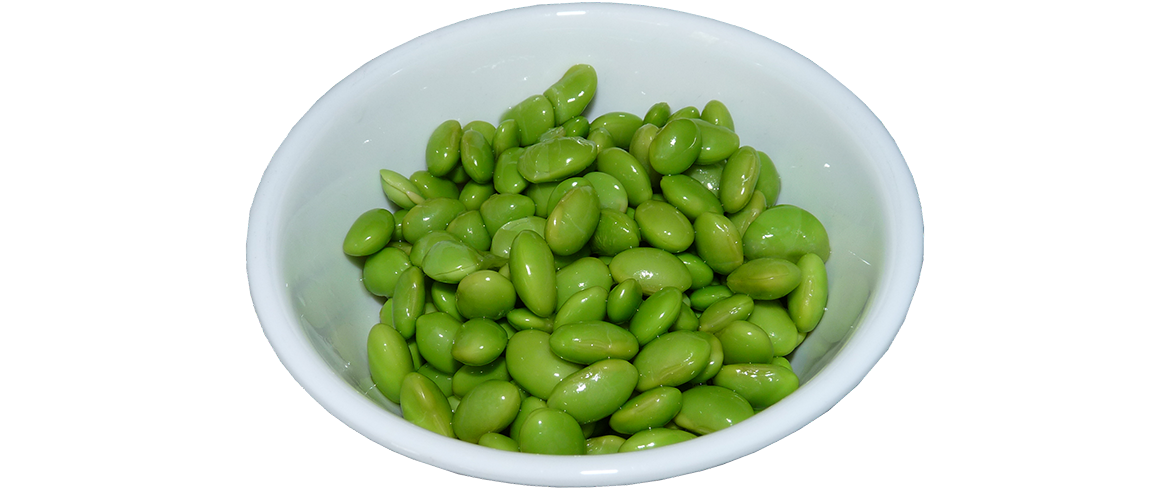No time to read? Listen to the podcast.
This is the story of research gone awry. My research.
A few months ago, I thought the history of the world’s first soy protein consumer product would make a good story. Although it’s out of production now, Bac*Os opened the door for soy protein meat substitutes to become commonplace on grocery store shelves.
If you remember Bac*Os, or if you’ve ever indulged in any of the meat-like soy products that are no longer the province of specialty stores, then maybe you’ve wondered the same things I did.
What team of food scientists, chemists and botanists did it take to make soybeans taste like bacon? What secret laboratory did they labor in to get the texture right? Who even thought it would be possible to turn soybeans into little chips of a food-like substance in the first place?
What I discovered not only surprised me, it reminded me that science, like life itself, rarely runs in straight lines.
There are only three names you have to remember about the history of Bac*Os: Betty Crocker, Henry Ford and Robert Boyer.
And here’s where the story gets interesting (and no, this isn’t a game where you have to pick the name that doesn’t belong). If it weren’t for Henry Ford, Robert Boyer’s name wouldn’t be on the list.
Robert Boyer?
“Boyer struck Ford as a very intelligent and open young man,” according to William Shurtleff, co-founder and director of The SoyInfo Center and co-author of sixty-six books (at this writing) about soybeans, soyfoods, their uses and their histories. (See the Mind Doodle below for a partial list.)
With the help of books and experts provided by Ford, Boyer, who had no prior knowledge of botany or chemistry, set out to learn what he needed to know.
Ford and Boyer first met at the Wayside Inn, where Ford took vacations. The inventor and industrialist was so impressed with Boyer’s intelligence and open-mindedness that he hired Boyer to work on the company’s special projects team. His mission? Find plants that could be used to build Ford cars.
This may sound a bit more like a Philip K. Dick short story — the MarigoldMobile or the ArtichokeAuto — than a real-life venture, but Ford was quite serious.
“Ford wanted to sell his cars and tractors to farmers, but the Great Depression left them in terrible shape,” Shurtleff told me, “so Ford decided he would become a customer of farmers.”
Ford decided to use farm products in his cars, providing farmers with an income they could spend on Ford products. This transformation of farm products into industrial products was called “chemurgy,” a word, Shurtleff noted, that has dropped out of our vocabulary.
With the help of books and experts provided by Ford, Boyer, who had no prior knowledge of botany or chemistry, set out to learn what he needed to know.
After experimenting with dozens of plants, Boyer concluded soybeans provided the best opportunity for both farmers and cars. “Boyer discovered they could use soy protein to make parts such as steering wheels and carburetor covers,” Shurtleff said.
But Boyer’s most interesting discovery, as far as this story goes, was his method for spinning soy protein into fibers.
“Spun soy protein fibers could be made into window shades and seat covers,” Shurtleff said. “Boyer also promised to use the fibers to make Ford a new coat.”
Personally, I think it was the coat that sealed the deal.
Boyer worked for Ford until the United States entered World War II. With the country in desperate need of aircraft, President Roosevelt ordered Ford to convert his River Run, Michigan, plant into a bomber factory. With that, Ford’s research into soybeans dropped off the radar. Boyer, lacking a challenge, left for greener pastures.
In 1954, Boyer patented his method for creating spun soy protein fiber. Five companies, including General Mills, licensed the process, but only General Mills had its eye on the American housewife. “If you could make bacon in a jar, and it was delicious, you could sell it to every housewife in America,” Shurtleff said.
And that’s just what General Mills did.
With Boyer’s help, the company spun protein fibers of just the right texture to work as bacon-like chips that needed no frying, cutting or preparation. Bac*Os became the first soy-based meat substitute to reach the mass market, taking its place on grocery shelves across the country.
Shurtleff said that the self-taught Boyer belongs in the company of men like Henry Ford and Thomas Edison. Unlike that duo, however, Boyer’s name remains unknown to average consumers, most of whom undoubtedly think Bac*Os was the invention of Betty Crocker, herself an invention of General Mills.
But in the history of iconic American products the surprising truth is that automobiles were not the only product Henry Ford started.
Start your Sunday with a laugh. Read the Sunday Funnies, fresh humor from The Out Of My Mind Blog. Subscribe now and you'll never miss a post.
Mind Doodle…
William Shurtleff has spent most of his life writing about soybeans and is arguably the most prolific author on the subject. He is the author or co-author of The Book of Tofu, The Book of Tempeh, The Book of Miso, History of Modern Soy Protein Ingredients – Isolates, Concentrates, and Textured Soy Protein Products (1911-2016) and Henry Ford and His Researchers — History of Their Work with Soybeans, Soyfoods and Chemurgy (1928-2011) — the latter two were instrumental in the telling of this story. But his interest in soybeans is more than academic. Click here to listen to comments he shared with me about what fuels his passion.
Bill Shurtleff co-founder and director of The Soyinfo Center, was born in California in 1941, He received degrees in engineering, honors humanities, and education from Stanford university. He taught physics for two years in Nigeria in the Peace Corps and has lived and traveled extensively in East Asia (including Japan where he studied Zen) and Third World countries. He speaks seven languages, four fluently, including Japanese. In October 1972, Bill and Akiko Aoyagi began working together, doing research and writing books about soyfoods. They worked together for six years in East Asia, mainly Japan, studying with top soyfoods researchers, manufacturers, nutritionists, historians, and cooks. Over 820,000 copies of their fifty-five books on soyfoods are now in print. In April 1976, Bill and Akiko founded the Soyinfo Center, and since that time they have worked to introduce soyfoods, especially traditional low-technology soyfoods, to the Western world. They feel that soyfoods can play a key role in helping to solve the world food crisis while providing high-quality, low-cost protein and healthier diets for people everywhere. Their work has led to the establishment of hundreds of soyfoods businesses making tofu, soymilk, miso, tempeh, and other soyfoods, and to the publication by others of more than fifty books about these foods.


And I thought Bac-O’s were cardboard!
Hi Nacy…
I think someone dropped a Bisquik biscuit into your salad.
—jay